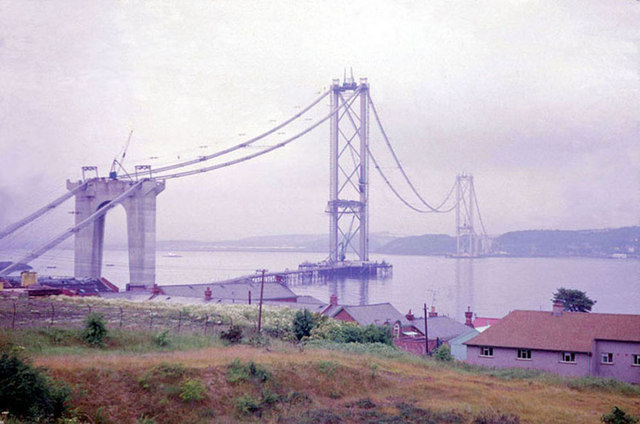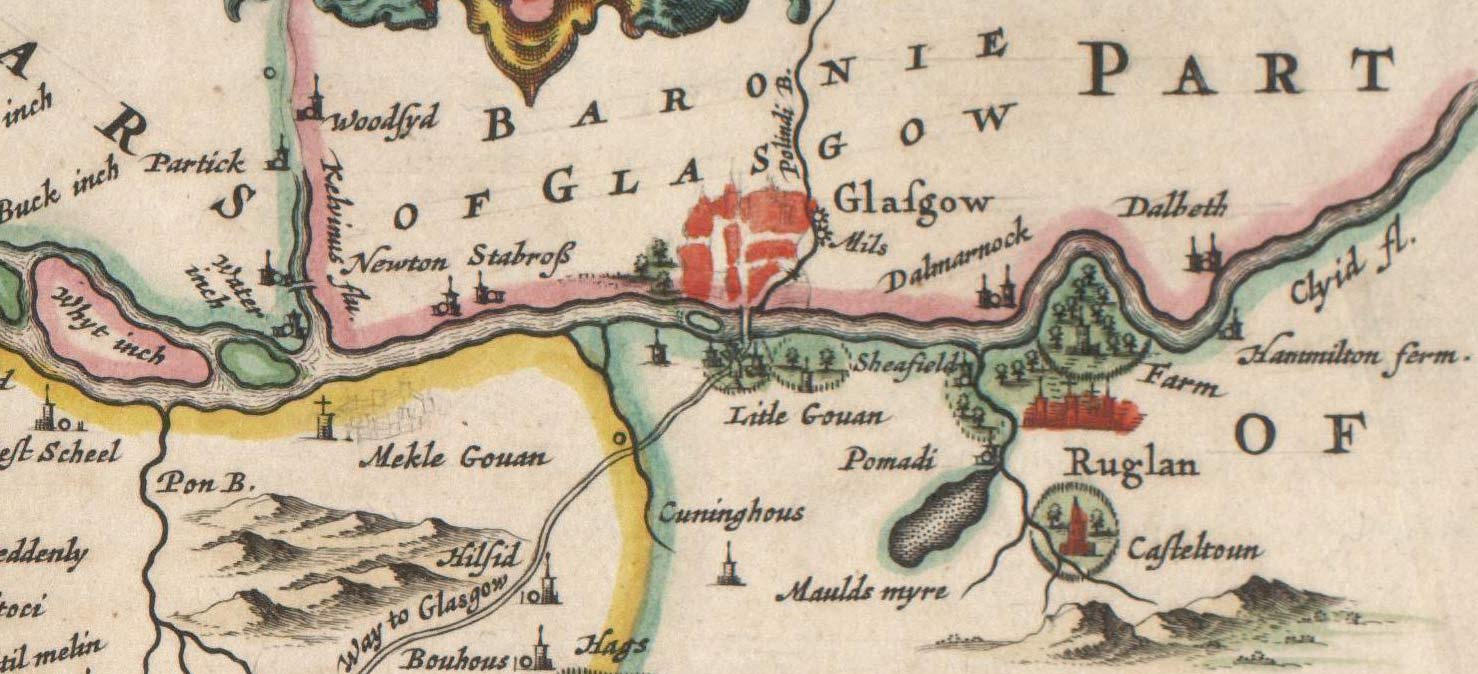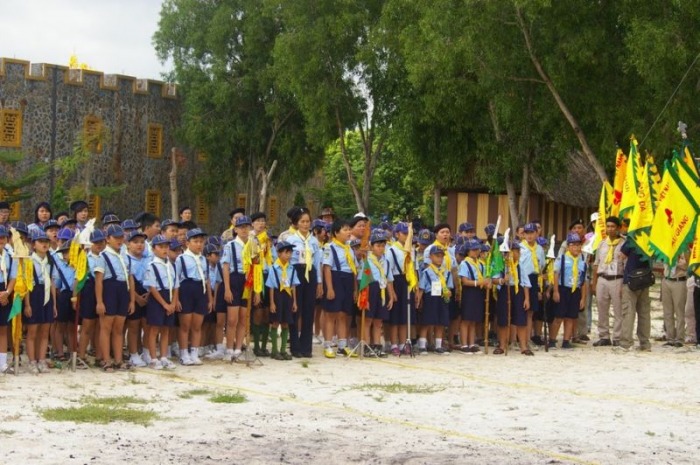|
Billy Connolly's World Tour Of Scotland
''World Tour of Scotland'' is a six-part television series – the first of Billy Connolly's "world tours" – originally broadcast by the BBC in July and August 1994. It involves his touring around his homeland for 54 nights during early 1994, beginning in Greenock and visiting cities and towns and performing live on stage to audiences. However, this, like all his other tours, involves more than just shows: he visits numerous places of historic and scenic value, as well as some places that resonate with his own upbringing. The series is dedicated "with much love and thanks to the people of Scotland". It has since been released on VHS and DVD. On the latter format, the six episodes are split across two discs. The series is often repeated on the UKTV channels Dave and Blighty. Opening and closing titles The opening titles feature an aerial view of the Range Rover (driven by Connolly throughout the series)Another Range Rover (number plate L863 ORV, as opposed to the one Connolly dr ... [...More Info...] [...Related Items...] OR: [Wikipedia] [Google] [Baidu] |
Billy Connolly
Sir William Connolly (born 24 November 1942) is a Scottish actor, retired comedian, artist, writer, musician, and presenter. He is sometimes known, especially in his homeland, by the Scots nickname the Big Yin ("the Big One"). Known for his idiosyncratic and often improvised observational comedy, frequently including strong language, Connolly has topped many UK polls as the greatest stand-up comedian of all time. In 2022 he received the BAFTA Fellowship for lifetime achievement from the British Academy of Film and Television Arts. Connolly's trade, in the early 1960s, was that of a welder (specifically a boilermaker) in the Glasgow shipyards, but he gave it up towards the end of the decade to pursue a career as a folk singer. He first sang in the folk rock band The Humblebums with Gerry Rafferty and Tam Harvey, with whom he stayed until 1974, before beginning singing as a solo artist. In the early 1970s, Connolly made the transition from folk singer with a comedic persona ... [...More Info...] [...Related Items...] OR: [Wikipedia] [Google] [Baidu] |
Glasgow Cross
Glasgow Cross is at the hub of the ancient royal burgh and now city of Glasgow, Scotland, close to its first crossing over the River Clyde. As a major junction in the city centre, its five streets run: north up the High Street to Glasgow Cathedral, Cathedral Square and the Royal Infirmary; east along Gallowgate and London Road, close to St Andrew's Square; south on the Saltmarket to Glasgow Green and the Justiciary Buildings; and west along Trongate continuing as Argyle Street towards St Enoch Square and Buchanan Street. Its most recognisable features are the Tolbooth Steeple, the surviving part of the 17th century Glasgow Tolbooth, and the mercat cross replica commissioned in 1929 by William George Black, and designed by architect Edith Hughes. Linked to the Tolbooth stood the Tontine Hotel and its Assembly Rooms, designed from 1737 by architect Allan Dreghorn with adaptations in 1781 by architect William Hamilton of St Andrew`s Square. The Tontine was the exchange centr ... [...More Info...] [...Related Items...] OR: [Wikipedia] [Google] [Baidu] |
Forth Road Bridge
The Forth Road Bridge is a suspension bridge in east central Scotland. The bridge opened in 1964 and at the time was the longest suspension bridge in the world outside the United States. The bridge spans the Firth of Forth, connecting Edinburgh, at South Queensferry, to Fife, at North Queensferry. It replaced a centuries-old ferry service to carry vehicular traffic, cyclists and pedestrians across the Forth; railway crossings are made by the nearby Forth Bridge, opened in 1890. The Scottish Parliament voted to scrap tolls on the bridge from February 2008. The adjacent Queensferry Crossing was opened in August 2017 to carry the M90 motorway across the Firth of Forth, replacing the Forth Road Bridge which had exceeded its design capacity. At its peak, the Forth Road Bridge carried 65,000 vehicles per day. The Forth Road Bridge was subsequently closed for repairs and refurbishment. It reopened in February 2018, now redesignated as a dedicated Public Transport Corridor, with acc ... [...More Info...] [...Related Items...] OR: [Wikipedia] [Google] [Baidu] |
Forth Railway Bridge
The Forth Bridge is a cantilever railway bridge across the Firth of Forth in the east of Scotland, west of central Edinburgh. Completed in 1890, it is considered a symbol of Scotland (having been voted Scotland's greatest man-made wonder in 2016), and is a UNESCO World Heritage Site. It was designed by English engineers Sir John Fowler and Sir Benjamin Baker. It is sometimes referred to as the Forth Rail Bridge (to distinguish it from the adjacent Forth Road Bridge), although this has never been its official name. Construction of the bridge began in 1882 and it was opened on 4 March 1890 by the Duke of Rothesay, the future Edward VII. The bridge carries the Edinburgh–Aberdeen line across the Forth between the villages of South Queensferry and North Queensferry and has a total length of . When it opened it had the longest single cantilever bridge span in the world, until 1919 when the Quebec Bridge in Canada was completed. It continues to be the world's second-longest si ... [...More Info...] [...Related Items...] OR: [Wikipedia] [Google] [Baidu] |
Scone Palace
Scone Palace is a Category A-listed historic house near the village of Scone and the city of Perth, Scotland. Built in red sandstone with a castellated roof, it is an example of the Gothic Revival style in Scotland. Scone was originally the site of an early Christian church, and later an Augustinian priory. Scone Abbey was severely damaged in 1559 during the Scottish Reformation after a mob whipped up by the famous reformer, John Knox, came to Scone from Dundee. Having survived the Reformation, the Abbey in 1600 became a secular Lordship (and home) within the parish of Scone, Scotland. The Palace has thus been home to the Earls of Mansfield for over 400 years. During the early 19th century the Palace was enlarged by the architect William Atkinson. In 1802, David William Murray, 3rd Earl of Mansfield, commissioned Atkinson to extend the Palace, recasting the late 16th-century ''Palace of Scone''. The 3rd Earl tasked Atkinson with updating the old Palace whilst maintaining chara ... [...More Info...] [...Related Items...] OR: [Wikipedia] [Google] [Baidu] |
Forfar
Forfar ( sco, Farfar, gd, Baile Fharfair) is the county town of Angus, Scotland and the administrative centre for Angus Council, with a new multi-million pound office complex located on the outskirts of the town. As of 2021, the town has a population of 16,280. The town lies in Strathmore and is situated just off the main A90 road between Perth and Aberdeen, with Dundee (the nearest city) being 13 miles (21 km) away. It is approximately 5 miles (8 km) from Glamis Castle, seat of the Bowes-Lyon family and ancestral home of Her Majesty Queen Elizabeth the Queen Mother, and where the late Princess Margaret, younger sister of Queen Elizabeth II, was born in 1930. Forfar dates back to the temporary Roman occupation of the area, and was subsequently held by the Picts and the Kingdom of Scotland. During the Scottish Wars of Independence, Forfar was occupied by English forces before being recaptured by the Scots and presented to Robert the Bruce. Forfar has been both ... [...More Info...] [...Related Items...] OR: [Wikipedia] [Google] [Baidu] |
Kirkcaldy
Kirkcaldy ( ; sco, Kirkcaldy; gd, Cair Chaladain) is a town and former royal burgh in Fife, on the east coast of Scotland. It is about north of Edinburgh and south-southwest of Dundee. The town had a recorded population of 49,460 in 2011, making it Fife's second-largest settlement and the List of towns and cities in Scotland by population, 12th most populous settlement in Scotland. Kirkcaldy has long been nicknamed the Lang Toun (; Scots language, Scots for "long town") in reference to the early town's main street, as indicated on maps from the 16th and 17th centuries. The street would finally reach a length of nearly , connecting the burgh to the neighbouring settlements of Linktown, Pathhead, Sinclairtown and Gallatown, which became part of the town in 1876. The formerly separate burgh of Dysart, Fife, Dysart was also later absorbed into Kirkcaldy in 1930 under an act of Parliament of the United Kingdom, Parliament. The area around Kirkcaldy has been inhabited sin ... [...More Info...] [...Related Items...] OR: [Wikipedia] [Google] [Baidu] |
Bannockburn
Bannockburn (Scottish Gaelic ''Allt a' Bhonnaich'') is an area immediately south of the centre of Stirling in Scotland. It is part of the City of Stirling. It is named after the Bannock Burn, a stream running through the town before flowing into the River Forth. History Land in the vicinity of Bannockburn town, probably between the Pelstream and Bannock burns (hence Bannockburn), was the site of the Battle of Bannockburn fought in 1314—one of the pivotal battles of the 13th/14th century Wars of Independence between the kingdoms of Scotland and England. A large monument and visitor centre is located near the site of the battle. In previous generations tourists came to visit the site and look at the Borestone. The dignity of the barony of Bannockburn is currently held by Hope Vere Anderson, a descendant of the Sandilands and Vere families of Sandilands and Lesmahagow, Lanarkshire who were the original Barons of Bannockburn in the 14th century. In the year of 1746, after the B ... [...More Info...] [...Related Items...] OR: [Wikipedia] [Google] [Baidu] |
Stirling
Stirling (; sco, Stirlin; gd, Sruighlea ) is a city in central Scotland, northeast of Glasgow and north-west of Edinburgh. The market town, surrounded by rich farmland, grew up connecting the royal citadel, the medieval old town with its merchants and tradesmen, the Old Bridge and the port. Located on the River Forth, Stirling is the administrative centre for the Stirling council area, and is traditionally the county town of Stirlingshire. Proverbially it is the strategically important "Gateway to the Highlands". It has been said that "Stirling, like a huge brooch clasps Highlands and Lowlands together". Similarly "he who holds Stirling, holds Scotland" is often quoted. Stirling's key position as the lowest bridging point of the River Forth before it broadens towards the Firth of Forth made it a focal point for travel north or south. When Stirling was temporarily under Anglo-Saxon sway, according to a 9th-century legend, it was attacked by Danish invaders. The sound of a ... [...More Info...] [...Related Items...] OR: [Wikipedia] [Google] [Baidu] |
Govan
Govan ( ; Cumbric?: ''Gwovan'?''; Scots: ''Gouan''; Scottish Gaelic: ''Baile a' Ghobhainn'') is a district, parish, and former burgh now part of south-west City of Glasgow, Scotland. It is situated west of Glasgow city centre, on the south bank of the River Clyde, opposite the mouth of the River Kelvin and the district of Partick. Historically it was part of the County of Lanark. In the early medieval period, the site of the present Govan Old churchyard was established as a Christian centre for the Brittonic Kingdom of Alt Clut (Dumbarton Rock) and its successor realm, the Kingdom of Strathclyde. This latter kingdom, established in the aftermath of the Viking siege and capture of Alt Clut by Vikings from Dublin in AD 870, created the sandstone sculptures known today as the Govan Stones. Govan was the site of a ford and later a ferry which linked the area with Partick for seasonal cattle drovers. In the eighteenth and nineteenth centuries, textile mills and coal mining were ... [...More Info...] [...Related Items...] OR: [Wikipedia] [Google] [Baidu] |
Loch Lomond
Loch Lomond (; gd, Loch Laomainn - 'Lake of the Elms'Richens, R. J. (1984) ''Elm'', Cambridge University Press.) is a freshwater Scottish loch which crosses the Highland Boundary Fault, often considered the boundary between the lowlands of Central Scotland and the Highlands.Tom Weir. ''The Scottish Lochs''. pp. 33-43. Published by Constable and Company, 1980. Traditionally forming part of the boundary between the counties of Stirlingshire and Dunbartonshire, Loch Lomond is split between the council areas of Stirling, Argyll and Bute and West Dunbartonshire. Its southern shores are about northwest of the centre of Glasgow, Scotland's largest city. The Loch forms part of the Loch Lomond and The Trossachs National Park which was established in 2002. Loch Lomond is long and between wide, with a surface area of . It is the largest lake in Great Britain by surface area; in the United Kingdom, it is surpassed only by Lough Neagh and Lough Erne in Northern Ireland. In the Briti ... [...More Info...] [...Related Items...] OR: [Wikipedia] [Google] [Baidu] |
Cub Scout
Cub Scouts, Cubs or Wolf Cubs are programs associated with Scouting for young children usually between 7 and 12, depending on the organization to which they belong. A participant in the program is called a Cub. A group of Cubs is called a 'Pack'. The Wolf Cub program was originated by The Boy Scouts Association in the United Kingdom in 1916 to provide a program for boys who were too young to be Boy Scouts. It was adopted by many other Scouting organizations. Many Scouting organizations, including The Scout Association, no longer use the Wolf Cub program and have replaced it with other programs but have retained the name Cubs. Others, including Traditional Scouting organizations, maintain the original Wolf Cubs program. Originally Cubs programs were open only to boys, while young girls could join the Brownies. Some Cub organizations are open to both girls and boys, although not necessarily in the same unit. A few organizations also operate a Sea Cub version of Cubs. Found ... [...More Info...] [...Related Items...] OR: [Wikipedia] [Google] [Baidu] |







